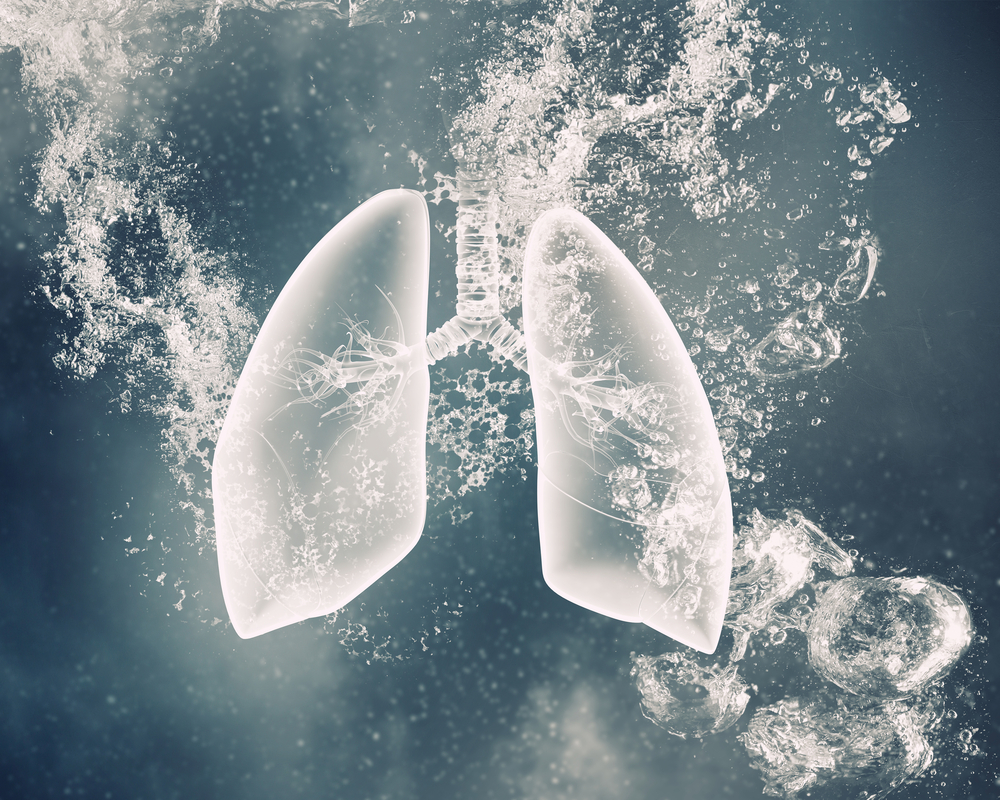GDF15 Protein May Serve as Biomarker for Identifying IPF Patients with Poor Outcomes, Study Suggests
Written by |

A protein called GDF15, which is secreted by a type of lung cells, is increased in the lungs and blood of people with idiopathic pulmonary fibrosis, a study shows.
Supported by this finding, researchers believe that GDF15 may serve as a biomarker to help identify people who have worse disease and may be at risk of poorer outcomes.
This was reported in the study “GDF15 is an epithelial-derived biomarker of idiopathic pulmonary fibrosis,” published in the American Journal of Physiology.
Idiopathic pulmonary fibrosis (IPF) is the most common type of interstitial lung disease, which is characterized by scarring (fibrosis) of the lung tissue.
Dysfunction of the epithelial layer of the lungs — the outmost layer of cells — has been thought to play an important role in the underlying mechanisms involved in IPF progression. However, the exact mechanism by which this group of cells may contribute to IPF remains unknown.
A team led by University of Pittsburgh researchers developed an experimental animal model in which type II alveolar epithelial cells, or AEC2s, were modified to undergo DNA instability and to stop growing. Interestingly, these mice developed pulmonary inflammation 14 to 21 days after epithelial deregulation was induced.
The Pulmonary Fibrosis News forums are a place to connect with other patients, share tips and talk about the latest research. Check them out today!
Using this animal model, researchers sought to characterize the signals that were changed by the dysfunctional epithelium as a means to identify potential biomarkers indicative of IPF.
By looking at gene production signatures, the team found that the protein Gdf15 was the most significantly upregulated upon an AEC2s imbalance.
Next, they confirmed that Gdf15 levels also were higher in mice that had been exposed to bleomycin, a pulmonary toxin widely used to induce experimental IPF symptoms. This suggests that Gdf15 upregulation is associated with the pro-inflammatory signals involved in IPF, rather than just being an artifact of the experimental procedures used.
Then, researchers wanted to see if Gdf15 was relevant in human IPF. To do so, they evaluated clinical samples collected from 134 IPF patients and 108 age-matched controls, stored by the Lung Genomics Research Consortium.
The data showed that GDF15 protein levels were increased in both blood and lung tissue from people with IPF compared with controls — and that it correlated with patients’ pulmonary function. The highest GDF15 levels were found in people who had more severe disease and poorer outcomes. GDF15 also was found to be highly present in lung areas that were more damaged, or that showed increased signs of fibrosis.
These results identify GDF15 as a new cell-specific marker of epithelial injury, as well as a new biomarker of IPF severity.
“Our data suggest that GDF15 is a novel epithelial ‘stress signal’ and biomarker of IPF that identifies patients with severe, progressing disease,” the researchers said.
“GDF15 is an epithelial-derived secreted protein that may be a useful biomarker of epithelial stress and identifies IPF patients with poor outcomes,” they concluded.






